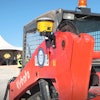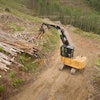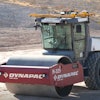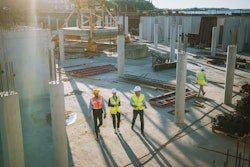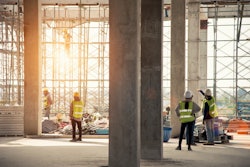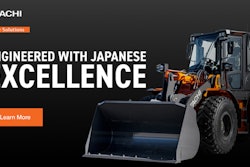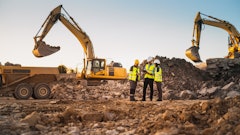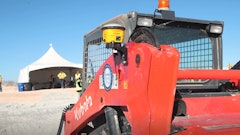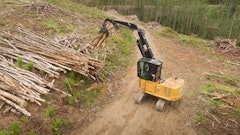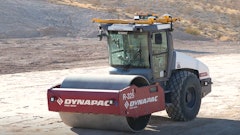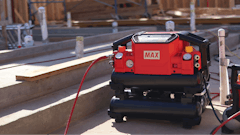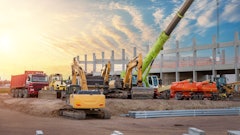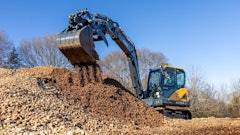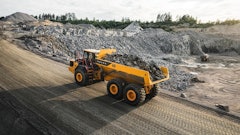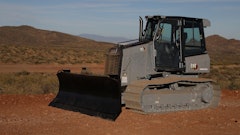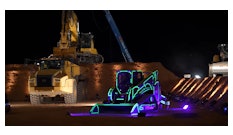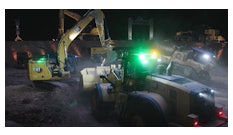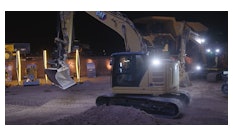
As the construction industry welcomes a new year and a new presidential administration, many contractors wonder what the future may hold. In conversation with industry experts, it appears that many of the existing industry challenges, such as the skilled labor shortage and market conditions, may remain. It’s a mix of optimism and uncertainty that lead the latest industry outlooks, however, experts suggest that careful planning and strategic decision-making can lead contractors to success in 2025.
According to Gregg Schoppman, partner at consulting and investment banking firm FMI Corporation, “In what appears to be a continuation of the previous year’s performance, the construction industry continued to see either growth or stability in all of its sectors,” said Schoppman. “Anchored by a large thrust in the residential sector once again, businesses largely flourished. Most organizations have seen stability in both profitability and the competitive landscape, according to FMI’s Civil Infrastructure Index.” However, Schoppman also notes a sizeable juxtaposition to the industry’s performance, and the lingering signs of troubled waters for all businesses.
Critical Industry Challenges for Contractors
In addressing the most critical construction industry challenges facing contractors, Zack Fritz, economist at Associated Builders and Contractors (ABC), said, “The construction industry will face several headwinds in 2025, including still-elevated materials costs, labor shortages focused in certain occupational categories, the lag effects of high interest rates and a weak residential sector. There is also a high degree of policy uncertainty, which may push back the timeline on certain projects and potentially keep rates higher for longer.”
Materials prices are top of mind for many. “One of the most critical challenges affecting construction contractors this year is material inflation,” said Alastair Hayfield, vice president, commercial vehicles, at market intelligence company Interact Analysis. “This is being driven by potential tariffs, which will push up project costs for contractors and may lead to some projects being cancelled if costs become too high,” he said.
Hayfield suggests another key challenge is the continuing shortage of skilled labor, which remains a problem in most major economies.
“The U.S. is no exception, and this will be another drag on contractors for 2025, pushing up prices and/or making projects more difficult to carry out,” said Hayfield.
“In what seems to be a continued theme for the last decade, if not longer, is the constant refrain of the shortage of qualified associates, both tradespeople and management,” said Schoppman. “However, the greatest difference from previous iterations of this statement is the push toward creating a solution. For years, leaders have lamented the lack of workers, only to realize that the solution may be an easier solve than previously thought — become an employer of choice. This does not mean there will be a massive surge in the supply of workers but rather a focused cultivation of talent within the four walls of a business.”
Schoppman notes the most progressive organizations create a strategy that focuses on onboarding, employee development, training, career progression and principles that retain top talent. “Ultimately, the firms that focus on creating an employee rich culture are able to leverage said culture more effectively,” said Schoppman. “In the end, creating and development talent begets more talent.”
According to Megan Tanel, president and CEO at Association of Equipment Manufacturers (AEM), “Material costs, driven by inflation, and ongoing workforce shortages remain the most critical challenges for contractors. These issues create uncertainty, especially with a new administration potentially influencing regulations and policies. Additionally, delays in federal funding distribution to the contractor level, such as those related to the Infrastructure Investment and Jobs Act (IIJA), exacerbate these challenges.”
That’s not all, according to Ken Simonson, chief economist at Associated General Contractors of America (AGC). “Construction is more dependent than most industries on imported materials and foreign-born workers,” said Simonson. “Imposition of tariffs and limits on immigration or expanded deportation measures will drive up costs, snarl supply chains, slow projects, and potentially lead to project cancellations.”
Demand will continue to remain a concern, according to Hayfield, who notes that weak and sluggish demand within some states and industries will continue to affect contractors’ order books.
Critical Industry Challenges for OEMs and Dealers
Looking at concerns from the original equipment manufacturer (OEM) side, Tanel shared that rising costs are a lingering challenge. “Rising costs — whether from raw materials, tariffs, or labor — remain the most pressing challenge for manufacturers and dealers,” she said. “The uncertainty surrounding tariffs, taxes and regulatory changes under the new administration adds complexity, particularly as these factors impact supply chains and international trade. Beyond costs, the workforce shortage and tightening environmental regulations remain ongoing hurdles. These factors collectively affect how equipment is manufactured, sold and shipped globally,” said Tanel.
Hayfield indicates that dealers may be facing inventory challenges carried over from 2024. “Overstocked inventories from 2024 will mean that 2025 continues to be challenging for OEMs,” said Hayfield. “They won’t be able to ramp production quickly and, given there may be lukewarm demand for new equipment, this will place further strain on the market.” He also notes that tariffs (depending upon where they land) could substantially hinder the market by increasing input costs for OEMs, or potentially limiting the availability of key components.
2024’s Influence on the Future
When it comes to the challenges that most affected the construction landscape in 2024, Fritz notes interest rates played a role. “High interest rates battered several nonresidential construction subsegments, including those that boomed in 2022 and 2023 like warehouse, restaurant and certain retail construction segments. Despite those declines in certain categories, the unprecedented surge in manufacturing projects kept labor markets tight in certain geographies, and overall construction activity elevated.”
According to Tanel, the two most significant challenges in 2024 were:
- The shortage of skilled labor, particularly among dealer technicians.
- Delays in translating IIJA funding into actionable projects, caused by permitting and process bottlenecks.
“To address these issues,” said Tanel, “the construction industry is increasingly adopting advanced technologies to enhance efficiency and fill workforce gaps. This trend will likely continue and expand in the years to come.”
Simonson shared that although construction activity grew more slowly as 2024 progressed, contractors continued to cite difficulty in finding qualified workers as their greatest challenge. He notes additional challenges for OEMs exist in equipment components and materials, stating, “Materials costs and availability largely returned to normal with the significant exception of transformers, switchgear and other electrical equipment, which continued to have long lead times.”
Predictions Shaping the Market
Fritz notes that when it comes to forecasting the trends, shifts and new areas of focus within the construction equipment landscape, “Most contractors have been exceedingly busy post-pandemic, sustaining healthy backlog and navigating America’s massive skilled construction worker shortages. In 2025, disparities in performance between contractors are set to widen as those associated with megaprojects, including manufacturing facilities, data centers and infrastructure, remain in high demand. Meanwhile, many contractors in weaker commercial real estate segments are poised to suffer their most unfavorable year post-pandemic, especially if borrowing costs remain elevated.”
Tanel predicts a notable shift in technology adoption, from being optional to essential. “Companies that fail to integrate advanced technologies will struggle to stay competitive or profitable,” said Tanel. “However, there’s a risk of adopting technology for the wrong reasons, such as adding zero-emission equipment solely to meet regulations or project owner demands rather than for genuine operational benefits.”
According to Simonson’s predictions, “Construction spending and employment will continue to increase at a moderate rate. But there is much more uncertainty about which market segments and geographic areas will thrive or dive in 2025 than appeared to be the case a few months ago. Tariff, tax, spending, immigration and monetary policy are all murkier than previously. To mitigate workforce challenges, companies will increasingly deploy technology like automation and AI to optimize repetitive tasks and enhance productivity. This will pave the way for smarter, more efficient operations across the industry.”
With an eye to the future, Hayfield suggests that construction businesses will need to ready themselves to bounce back. “There is uncertainty in the U.S. related to the new administration and many will be waiting to see how tariffs and policies play out before making too many decisions about investment or where to focus their attention in 2025,” said Hayfield. “However, there is likely to be market growth toward the back half of this year and this is something that people need to start preparing for.”
Acceleration and Advancement
Across the construction industry, project opportunities are shifting. According to Fritz, “The office sector will remain strong in 2025, but that’s entirely because it includes data center construction (by the U.S. Census Bureau’s definition). General office spending remains significantly below pre-pandemic level and is unlikely to meaningfully rebound next year.”
In the same vein, Tanell suggests the greatest potential lies in leveraging technology to streamline repetitive tasks, increase safety and improve efficiency. “For instance, AI-driven systems could automate predictive maintenance processes by analyzing equipment data, scheduling services, and reducing the need for multiple personnel. Additionally, advancements in automation and operator-assist technology could simplify machine operations, reducing labor demands,” said Tanel.
She also notes, “The adoption of additive construction methods and automation will also accelerate, supplementing traditional approaches and addressing both labor and productivity challenges.”
In the broader view, Tanel also notes that manufacturing construction, bolstered by federally incentivized megaprojects across the country, will retain momentum through next year, as will public categories related to infrastructure like highway and street, sewage and waste disposal, and water supply.
Simonson lands on the same page, predicting that data center activity will continue to be a market driver.
“Demand for data centers [will] likely remain torrid and may even accelerate further. There will also be demand for new manufacturing plants, even as the timetable and investment slip somewhat for semiconductor and electric vehicle plants. The downturn in demand for warehouses and apartments will moderate and may reverse by year-end or early 2026,” said Simonson.
Schoppman reports, “Previously, there was the push in electric vehicles, battery production and large-scale charging stations. While still prevalent, the same fervor lies in data centers and the need to create complementary and scalable solutions to the nation’s technological infrastructure needs. In some cases, the push to build such facilities creates a sizeable burden on the labor market simultaneously. For example, consider the labor needs to construct a $20 billion to $30 billion data center, in particular, in a midsize market.
Now consider the ramifications of finding labor if you are not involved in the construction of said data center. Ancillary businesses see a boon in growth which is welcome while also create an added wrinkle in the competitive landscape.”
Hayfield is careful to note that, due to the IRA and the IIJA, fairly good investment in data centers, electronics manufacturing and infrastructure has continued, “We would expect to see more of this activity into 2025,” said Hayfield.
Equipment Purchasing Factors
When it comes to the equipment marketplace, contractors have a lot to consider in purchasing decisions moving into the new year. According to Tanel, “Contractors already prioritize machine capability, efficiency and safety when purchasing equipment. Manufacturers are constantly innovating to meet these needs, with a strong focus on creating safer and more efficient machines. Budget and machine availability will also play a key role in these decisions, as contractors balance immediate project needs with long-term operational goals.”
Simonson advises contractors to make purchasing or leasing decisions with an eye toward the possible impact of tariffs on the cost and availability of equipment.
With consideration for a mixed fleet’s composition, Hayfield notes, “Contractors should always consider the buy versus lease option for machinery. Depending upon market conditions, it could make sense to limit capital expenditure (i.e. new machinery purchases) and rent or lease machinery until market conditions are clearer. If contractors do purchase new machinery, they might want to examine in detail what new technologies or features it has. For example, machine control (2D/3D) is becoming more popular and can provide cost savings or more efficient ways of working.”
Trump and Tariffs
At print time, President Trump’s tariff discussions with Canada and Mexico were underway, but not resolved.
According to Fritz, “The Trump administration’s policy agenda should provide both tailwinds and headwinds for the construction industry. Efforts to cut the absurd levels of red tape around public construction projects will accelerate project timelines and give taxpayers more infrastructure per dollar spent. Aggressive deregulation efforts and potential tax cuts will stimulate business activity, increasing investment in structures,” said Fritz.
Additionally, he notes that Congress is working on a budget reconciliation bill, which could alter corporate and individual tax rates and change federal tax incentives for clean energy construction projects. “Those tailwinds will be partially countervailed by the effects of tariffs and immigration policies, both of which have potential to push project costs higher,” said Fritz. “Perhaps more importantly, inflation expectations and bond yields have risen since the election, suggesting that interest rates may remain higher for longer than previously anticipated.”
Simonson said, “The Trump administration can enable faster and more efficient construction of infrastructure and private structures through selective repeal of regulations and better streamlining and coordination of project reviews and approvals. It is essential that the administration allow waivers from tariffs or immigration restrictions for construction projects that otherwise would be unduly delayed or cost-burdened.”
As we wait to see what actions Trump may take on the tariff front, Hayfield suggests, “This is a big unknown since it isn’t clear (yet) how large tariffs will be or where they will land. Tariffs tend to push up prices for consumers, so the construction industry should be braced for raw material price inflation. However, it’s difficult to say if this will be across the board or whether it will be focused on one or two industries (like steel, for example).”
Considerations for the Future
When it comes to construction innovation, emission reduction and other emerging trends, experts suggest there is a long road ahead.
According to Tanel, “The journey toward emission reduction and equipment innovation doesn’t need to be an all-or-nothing leap. Since 1996, the construction equipment manufacturing industry has reduced emissions by nearly 96% and continues to make significant improvements in efficiency, safety
and productivity,” said Tanel. “Innovation should focus on iterative progress,” said Tanel, “designing equipment that not only meets, but exceeds current environmental and safety regulations while utilizing technology to enhance performance.
Manufacturers remain committed to developing equipment that aligns with their customers’ evolving needs, whether through emissions reduction, automation, or safety enhancements, all while advocating for balanced regulatory approaches.”
According to Hayfield, with a number of areas looking to drive the adoption of low- and zero-emission machinery (California, New York, Austin, etc.), there will be market growth in these areas, and contractors can expect to see more adoption. “This will drive some market growth through 2025. Digitalization and machine automation are also hot topics at present,” said Hayfield.


